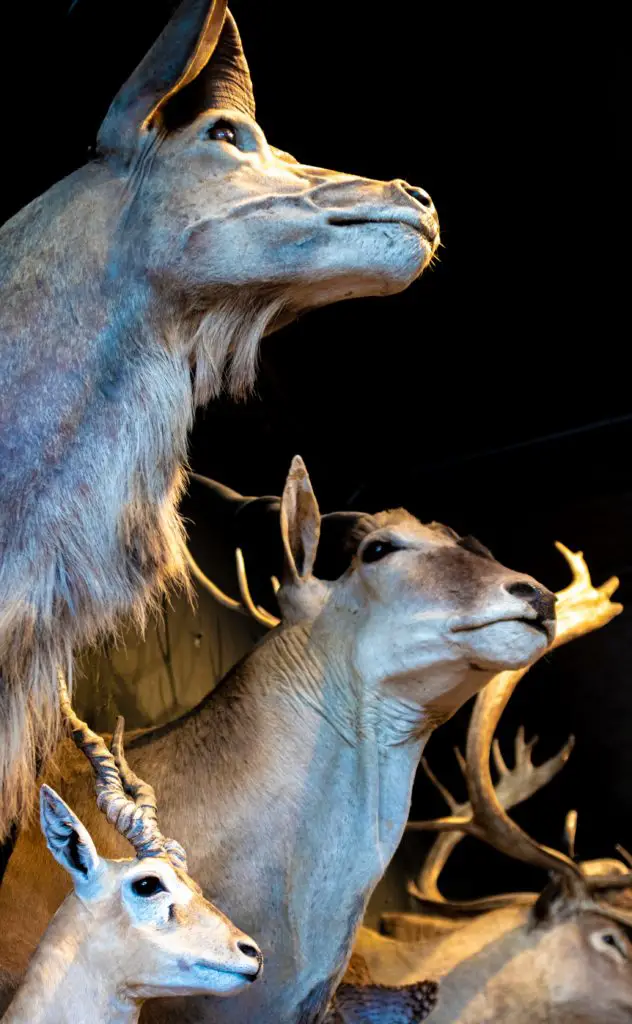Taxidermy refers to the stuffing and mounting of an animal to preserve its characteristics. Taxidermy is done for personal and professional purposes, such as to display the catch of a hunt (hunting trophies) or to study different species of animals. Here comes the most asked question How much does taxidermy cost?

How Much Does Taxidermy Cost?
The cost of taxidermy depends on the requirement of the client and the size of the animal in question. A full-size mount for a small bird starts at around $300. For larger animals, like a deer, you can expect to pay anywhere from $1,800 – $6,000, depending on the taxidermist.
With prices ranging from $11-$25 per inch for fish, you’ll be less likely to break the bank.
What kind of mounts is available for Taxidermy?
Shoulder mounts:
Mount starts from the shoulders. Preferable for displays of larger animals like dear, boar, elk, fox, etc.
Price range: $500 to $1000.
Head Mounts:
Only the head is mounted.
Price range: $500 to $1000.
Antler Mounts:
Only the antlers or horns are mounted. It is the cheapest option.
Price Range: $130 to $200.
Life-Sized Mounts:
Typical for small animals like fish, fowls, squirrels, etc.
Price Range: $300 to $1700
How is Taxidermy done?
- Taxidermy methods vary for different species, but the general outline of the process is the same overall.
- It is first necessary to remove the animal’s insides. Afterward, the meat and skin are separated.
- While the skin is left to dry, work starts on the mold.
- These days, the mold is made out of Polyurethane foam, which gives life-like and accurate results.
- To remove all the moisture the hide is treated with salts (such as Borax and alum). Next, it is tanned, which can take weeks and requires a lot of space.
- The final step is mounting the hide on the mold and sewing it shut. The eyes of the animals are replaced with glass replicas. The horns/antlers are removed from the skull and screwed onto the mold.
Why is Taxidermy so expensive?
Perfecting the art of taxidermy requires years of training. Months of labor and materials go into a good taxidermy job. And of course, as it is a business, a markup is included in the final prices to make a profit. Thus, the final cost of taxidermy comes out to be what it is.
Cheap Vs. Expensive. Which one should you prefer?
A cheap taxidermist might be covering for inexperience or a poor business model, while an expensive one might be overcharging you.
Before picking your taxidermist, check out their prices and quality of work online and make an informed decision. It is advisable to ask for referrals from trusted friends to pick the perfect taxidermist.
When should you send the carcass to a Taxidermist?
The preservation process of the skin needs to start as soon as possible.
If you can perform the skinning yourself, make sure to do so in a way that preserves the look of the animal.
Keep the animal dry and clean while transporting it to the taxidermist. If you are not familiar with the process of skinning, many studios will do it for you.
The carcass must reach the taxidermist in good shape so they have an idea of the final look of the animal.
How long does a typical Taxidermy job take?
A taxidermy job can take anywhere from 8-12 months and, in some cases, even years. The longest step in the taxidermy process is tanning. Tanning can take up to six months to finish.
However, sending the skin off to a tannery is not as straightforward as you might think.
Most studios have to wait several weeks until an appropriate number of skins is collected to send off to a tannery.
After that, even if the skin returns from the tannery after months, the ongoing projects have to be completed before work can start on a new one.
After the skin is received, the actual mounting takes little time.
Conclusion
Whether you want to study nature or display your hunting trophies, taxidermy is an art that has existed for these purposes for decades.
Sculpting realistic molds, removing the hide/skin without tears, treating it, and finally sewing it on perfectly. These are all skills that take years of training to hone. The amount of work and time put into making taxidermy more than makes up for its price. That’s why cost of Taxidermy is high.
Frequently asked questions
- What kind of animals can undergo taxidermy?
Almost all animals can be mounted. From fish to elks, there is a taxidermist out there for everything.
Although taxidermy is commonly done on vertebrates, large insects and arachnids can also be mounted under certain circumstances.
- Can you skin the animal yourself to reduce costs?
Unless you are highly skilled in removing hide, you should leave the job to the professionals. The skin needs to be cut from underneath and from the inside out. If you are unfamiliar with the technique, you can damage the skin.

